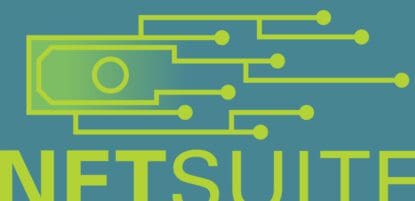“The planning is everything, but the plans are nothing.” – Dwight D. Eisenhower
Movement to the cloud is happening at businesses of all sizes and industries because of the numerous benefits that cloud technology provides, including hands-off maintenance, automatic updates, and greater operational flexibility. This is backed by the fact that 77% of enterprises now have at least one application or a portion of their enterprise computing infrastructure in the cloud. Enterprise Resource Planning (ERP) solutions are one type of solution that is making a home for itself in the cloud, as Statista forecasts the market for cloud ERP tech will be $31.09 billion in 2029.
Change within organizations requires diligence and up front planning in order to ensure success. If you are among the many businesses planning to make a move to a cloud ERP, here are the three transitions to focus on as you plan for a quick and painless move:
The Technical Transition
First, there is the challenge of making a smooth technical transition. There is a high level of technical nuance that comes with moving data from on-premise to the cloud, and the old saying that “the devil is in the details” most definitely applies. It’s easy for a finance team to quickly move into an implementation without getting all of the necessary technical clearance, and see the whole project come to a screeching halt.
Then again, the cloud still remains new and uncharted territory for many at this point. Even after all the necessary approvals for technical compatibility are collected, technical difficulties can still arise amidst even the most well-thought-out project transitions. A combination of employee turnover and the passage of time lead to more hurdles during transitions, such as undocumented processes or residual reliance or usage of legacy systems. Getting your ducks in a row on the technical side of the transition is absolutely essential.
The Operational Transition
While most SaaS products are designed to be intuitive and easy to use, that is far from license to forgo training your employees to relearn standard operating procedures with a new solution in place. Productivity naturally dips in the days leading up to and following an ERP transition, but assuming an assimilation to new requirements and techniques on the fly will prolong the period of time your team spends in a less productive “transition mode.”
Once new processes are redefined with your new ERP in place, it’s important that no essential tasks slip through the cracks wherein a situation arises where one team member assumes another team member has a given task covered. The stakes for ensuring a smooth operational transition only escalate with a task involving the on-time payment of vendors, as they are a key stakeholder in the continued operations of your company.
The ROI of your Transition
Another key factor to manage during your transition to a cloud ERP face is the ROI of your project. While the value of the solution is definitely a big factor, the way you go about its implementation also plays a big role on how well you can capitalize on the opportunity that the move creates. Teams making the move with the narrow-minded focus on simply getting the new software implemented and up and running will miss opportunities to effectively sharpen the processes that run through their new cloud ERP.
The simplicity with which Cloud ERPs integrate with other solutions and plug-ins opens up a gold mine of opportunity to easily tune up your current SOPs for things like accounts payable, T&E, and human capital management. Companies that wait to consider additional cloud solutions until after transitioning to their new ERP face the following dilemma: After finally learning the ins-and-outs of their new ERP, they will then need to re-learn how to run any updated processes that subsequent third-party cloud solutions create, prolonging the amount of time spent in a less productive “transition mode.” For this reason, the challenge of ensuring an optimal transition requires a holistic view of your finance operations from the very beginning.
How to Ensure a Smooth Transition
Former President Dwight D. Eisenhower famously said, “The planning is everything, but the plans are nothing.” Teams managing a transition to a cloud ERP will find benefit from adopting this mantra throughout the switching process. While taking the most important details into account during planning is essential, it’s also critical to proceed with the expectation that challenges will arise and adaptation is necessary in order to overcome them.
The Baltimore Ravens are an example of an organization that recently moved to both a cloud ERP as well as an automated accounts payable workflow simultaneously. By managing both transitions at the same time, they were able to minimize the amount of re-learning that needed to take place, and the maximize the full benefits of the cloud as quickly as possible.
To learn how the Baltimore Ravens optimized their transition by moving to AP Automation alongside of NetSuite, check out their case study with MineralTree.



